
San Andres Island: Colombia's Caribbean Gem
Discover the allure of San Andres Island, Colombia: a Caribbean paradise with crystal-clear waters, vibrant culture, and rich history, perfect for beach lovers, divers, and foodies.
San Andres Island, a small gem in the Caribbean Sea, offers visitors a mix of natural beauty, vibrant culture, and a rich history. With its crystal-clear turquoise waters, white sandy beaches, and lush greenery, San Andres is a paradise for beach lovers and water sports enthusiasts alike. The island is home to some of the most stunning coral reefs, making it a perfect destination for snorkeling and scuba diving. The island's culture is a blend of Afro-Caribbean, Spanish, English, and Creole influences, which can be seen in its music, food, and festivals. The local Raizal community adds a unique charm to the island, with their warm hospitality and rich traditions. Don't miss the opportunity to try the local cuisine, which features fresh seafood, coconut rice, and tropical fruits. San Andres is also a shopper's paradise, thanks to its duty-free status. From luxury goods to local crafts, you can find a variety of items to take home as souvenirs. The island's vibrant nightlife offers numerous bars, clubs, and live music venues where you can dance the night away to reggae, salsa, and more. Whether you're seeking adventure, relaxation, or cultural immersion, San Andres Island has something for everyone.
Local tips in San Andres Island
- Bring cash, as not all places accept credit cards.
- Rent a golf cart or scooter to explore the island at your own pace.
- Visit the island during the dry season (December to April) for the best weather.
- Respect the local culture and traditions, especially when interacting with the Raizal community.
- Try the local dish 'Rondón,' a seafood stew made with coconut milk.
San Andres Island: Colombia's Caribbean Gem
San Andres Island, a small gem in the Caribbean Sea, offers visitors a mix of natural beauty, vibrant culture, and a rich history. With its crystal-clear turquoise waters, white sandy beaches, and lush greenery, San Andres is a paradise for beach lovers and water sports enthusiasts alike. The island is home to some of the most stunning coral reefs, making it a perfect destination for snorkeling and scuba diving. The island's culture is a blend of Afro-Caribbean, Spanish, English, and Creole influences, which can be seen in its music, food, and festivals. The local Raizal community adds a unique charm to the island, with their warm hospitality and rich traditions. Don't miss the opportunity to try the local cuisine, which features fresh seafood, coconut rice, and tropical fruits. San Andres is also a shopper's paradise, thanks to its duty-free status. From luxury goods to local crafts, you can find a variety of items to take home as souvenirs. The island's vibrant nightlife offers numerous bars, clubs, and live music venues where you can dance the night away to reggae, salsa, and more. Whether you're seeking adventure, relaxation, or cultural immersion, San Andres Island has something for everyone.
When is the best time to go to San Andres Island?
Iconic landmarks you can’t miss
Rocky Cay
Experience the tranquil beauty of Rocky Cay, a stunning public beach in San Andrés and Providencia, perfect for relaxation and adventure.
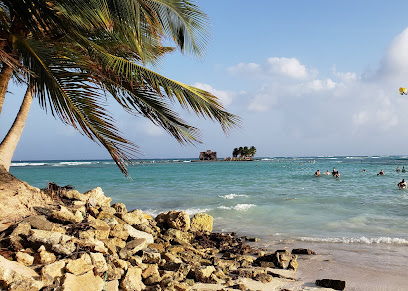
Decameron Isleño
Experience the vibrant beauty of San Andrés at Decameron Isleño, where tropical bliss meets exceptional hospitality.

Beer Station - San Andrés
Discover the vibrant flavors of the Caribbean at Beer Station, San Andrés' premier grill and fast-food restaurant, perfect for a casual dining experience.
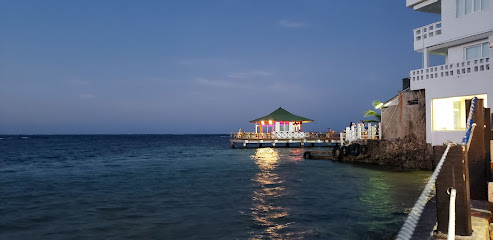
Hamburguesas El Corral
Experience the best gourmet burgers in San Andrés at Hamburguesas El Corral, where taste meets island vibes.
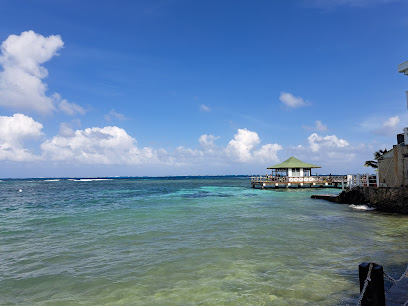
Bocca De Oro
Experience the exquisite fusion of Caribbean and international cuisine at Bocca De Oro, the culinary jewel of San Andrés.

San Andrés Ecological Park
Discover the natural beauty of San Andrés Ecological Park, a tranquil oasis of biodiversity on the stunning Caribbean island of San Andrés.
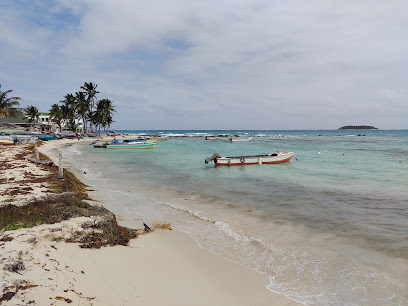
Centro De Buceo Blue Life
Experience the vibrant underwater world of San Andrés with expert guidance at Centro De Buceo Blue Life, your premier diving destination.
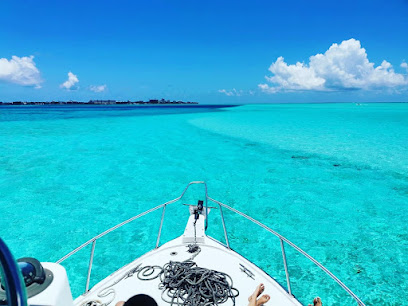
Azure Lofts & Pool
Discover tranquility at Azure Lofts & Pool, where stunning views and luxurious comfort meet in the heart of San Andrés, Colombia.
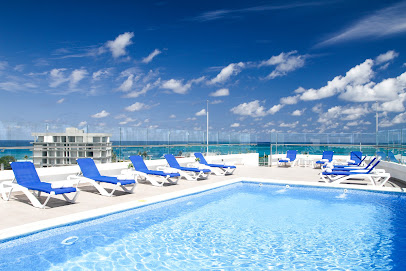
Acantilado de la Tierra
Discover the beauty of San Andrés at Acantilado de la Tierra, a serene hotel retreat offering stunning views and modern comforts.

Vuelta a la Isla de San Andrés - Tren Turístico
Experience the enchanting beauty of San Andrés Island on the Tren Turístico. A scenic train journey showcasing vibrant landscapes and rich culture.
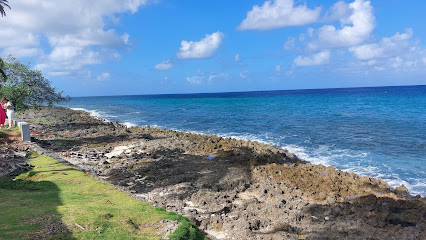
First Baptist Church in Latin America
Discover the First Baptist Church in San Andrés, Colombia - a historical landmark of faith and community in Latin America.
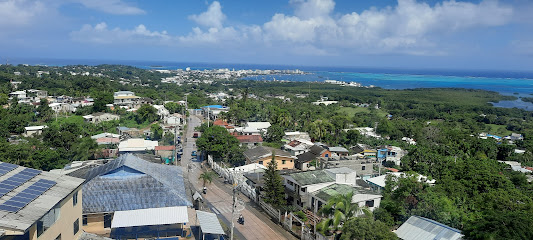
San Andrés
Discover the enchanting beauty and vibrant culture of San Andrés, a Caribbean gem known for its stunning beaches and exhilarating water activities.
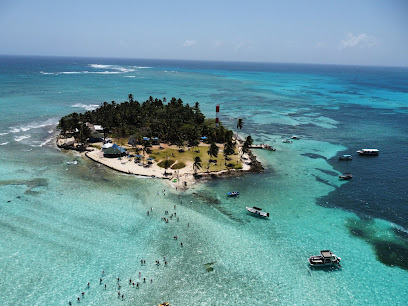
Arnols places
Discover the rich flavors of San Luis at Arnols Places, where grilled delicacies meet Caribbean charm in a stunning setting.
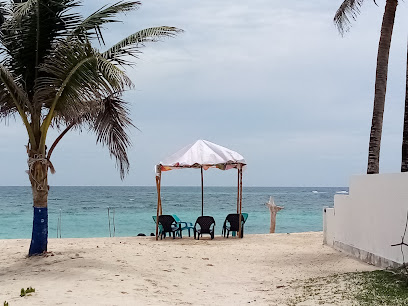
Isla San Andres
Explore Isla San Andres, a Caribbean paradise with stunning beaches, rich culture, and unforgettable adventures in Colombia.
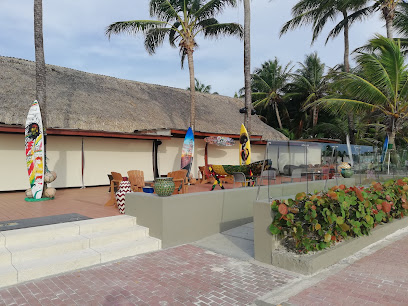
Barco Encallado
Experience the charm of Barco Encallado, a stunning shipwreck site in Isla de San Andrés y Providencia, rich in history and natural beauty.
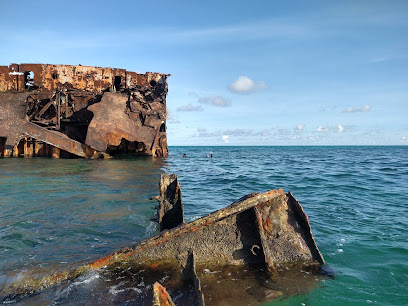
Unmissable attractions to see
Rocky Cay
Immerse yourself in the stunning beauty of Rocky Cay, a tranquil beach paradise in San Andrés y Providencia, known for its crystal-clear waters and vibrant marine life.
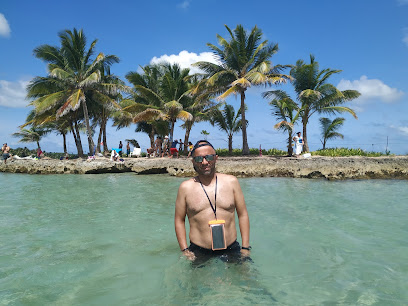
Eco Parque West View
Discover unparalleled views and natural beauty at Eco Parque West View, the ultimate observation deck in San Andrés, Colombia.

Casa Museo Isleña
Explore the rich cultural heritage of San Andrés at Casa Museo Isleña, where history and tradition come alive in a vibrant setting.
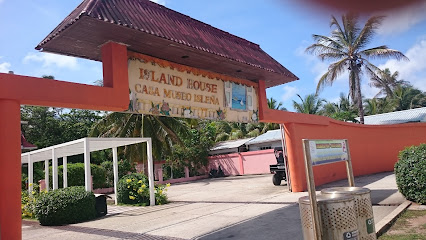
Playa Charquitos
Discover the enchanting beauty of Playa Charquitos, a pristine beach in San Andrés, Colombia, perfect for relaxation and underwater exploration.
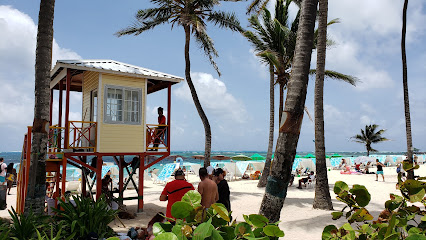
Laguna Big Pond
Experience the tranquil beauty of Laguna Big Pond, a nature preserve in San Andrés, offering serene waters and lush landscapes perfect for relaxation.
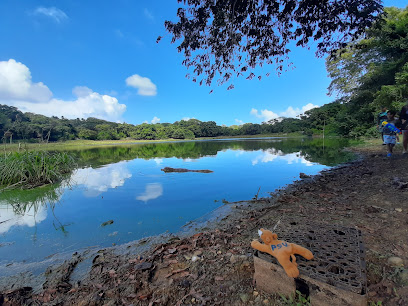
Cañón de Morgan
Discover the breathtaking beauty of Cañón de Morgan, a natural landmark in San Andrés that offers stunning vistas and rich biodiversity.
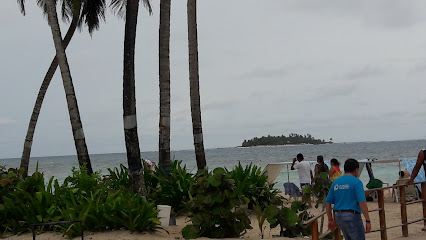
La Barracuda
Discover the vibrant artistry of La Barracuda, a stunning sculpture in San Andrés that celebrates the island's rich cultural heritage and natural beauty.
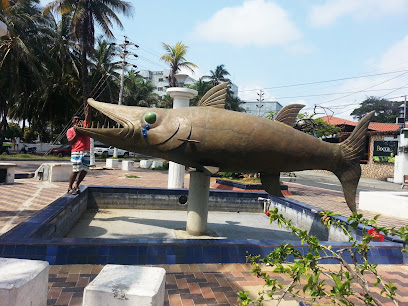
Jardín Botánico de San Andrés
Discover the vibrant flora and breathtaking views at Jardín Botánico de San Andrés, a tropical oasis in the heart of the Caribbean.
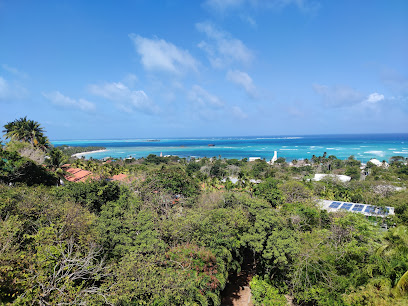
Letrero I love San Andrés
Discover the vibrant spirit of San Andrés at the iconic 'I Love San Andrés' sign, a must-visit for every traveler in this Caribbean paradise.
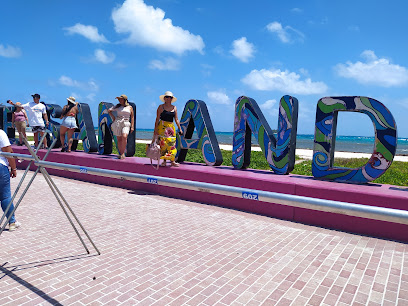
San Andrés Ecological Park
Explore the lush landscapes and diverse wildlife at San Andrés Ecological Park, a must-visit destination for nature lovers in the Caribbean.
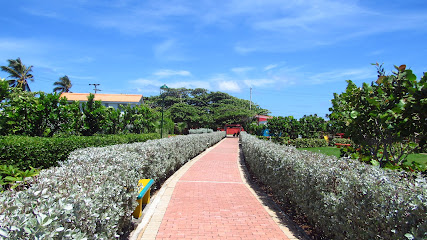
Ecofiwi
Experience the breathtaking beauty of San Andres through Ecofiwi's canoe and kayak tours, exploring stunning landscapes and vibrant marine life.
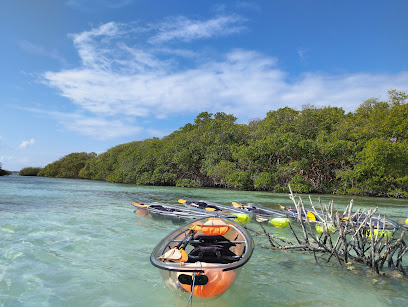
Mirador Paisajístico Torre First Baptist Church
Explore the breathtaking Mirador Paisajístico Torre for stunning panoramic views of San Andrés and its vibrant Caribbean landscapes.
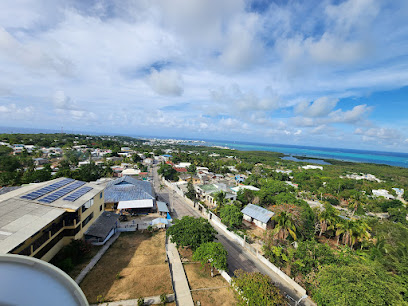
Morgan's Head
Explore the breathtaking beauty of Morgan's Head in Providencia, where nature, adventure, and relaxation combine for an unforgettable experience.
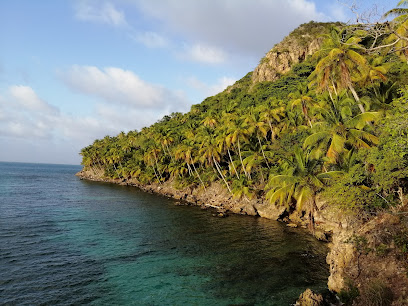
Playa Principal
Explore the beauty of Playa Principal, a tropical paradise in Isla de San Andrés y Providencia, perfect for relaxation and marine adventures.
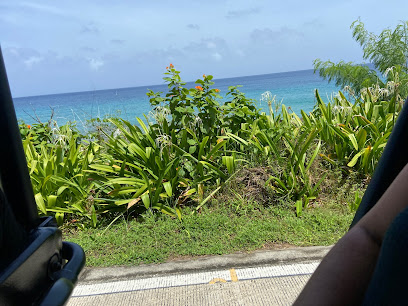
Perry Hill
Explore Perry Hill, a breathtaking scenic spot in La Loma, San Andrés, offering stunning views and a tranquil escape in the Caribbean.
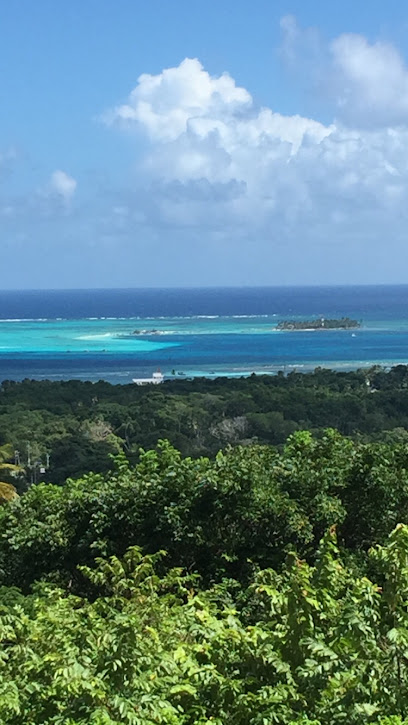
Essential places to dine
La Regatta
Discover La Regatta in San Andrés – where exquisite seafood meets stunning ocean views for an unforgettable dining experience.

The Islander
Discover delectable Caribbean cuisine at The Islander in San Andrés – where fresh seafood meets vibrant island flavors.
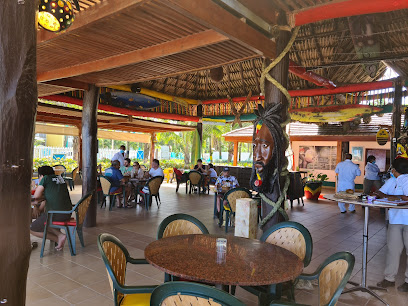
Donde Francesca
Discover the exquisite flavors of Colombia at Donde Francesca in San Luis - where fine dining meets local charm.

Capitán Mandy
Experience authentic Caribbean cuisine at Capitán Mandy in San Andrés—where every dish tells a story.
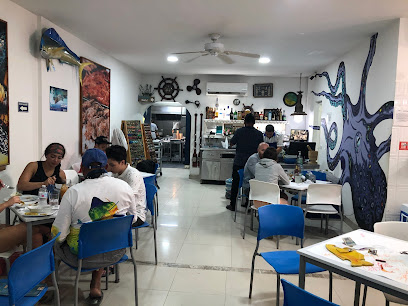
Perú Wok - San Andrés
Savor authentic Peruvian cuisine at Perú Wok in San Andrés – a must-visit culinary hotspot for every traveler.
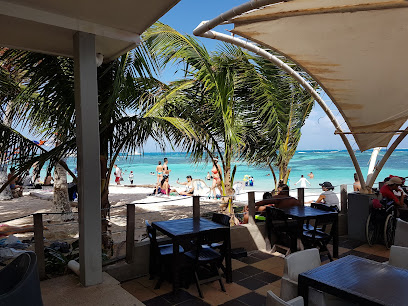
Sea Watch Caffe
Experience exquisite pizza with breathtaking ocean views at Sea Watch Caffe in San Andrés – an essential stop for food lovers!
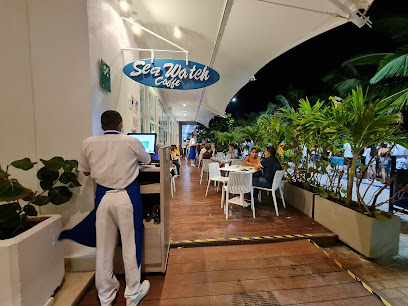
La Pizzetta Florio
Discover authentic Italian cuisine at La Pizzetta Florio, where delicious pizzas and pastas await you in the heart of San Andrés.
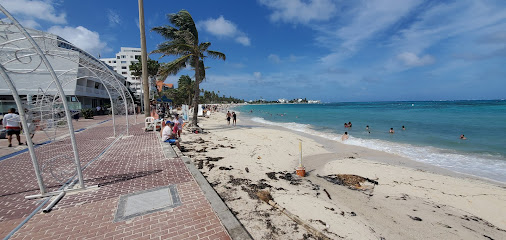
Fisherman Place
Discover Fisherman Place in San Andrés for an unforgettable Caribbean dining experience filled with fresh seafood and vibrant flavors.
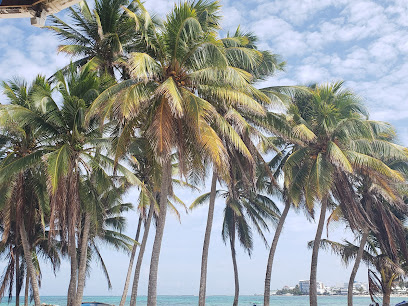
HASBI
Savor authentic Lebanese flavors at HASBI in San Andrés—where every dish tells a story of tradition and passion.
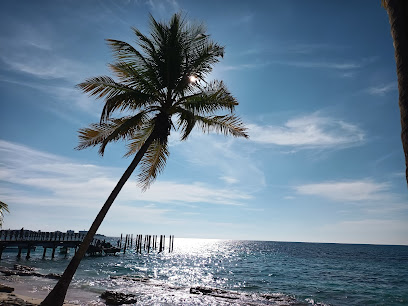
Miss Celia Restaurante
Experience authentic Caribbean cuisine at Miss Celia Restaurante in San Andrés - where every dish tells a story.
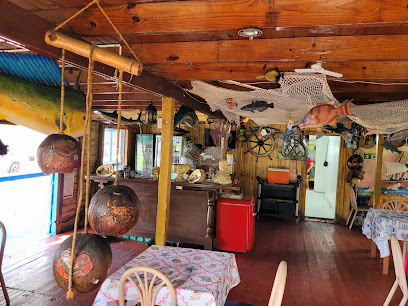
Gourmet Shop Assho
Experience the best of San Andrés cuisine at Gourmet Shop Assho - where local flavors meet innovative culinary artistry.
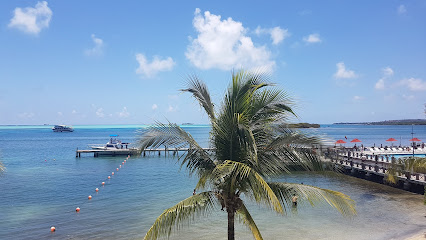
Bocca De Oro
Experience authentic Caribbean flavors at Bocca De Oro in San Andrés - a culinary delight not to be missed!
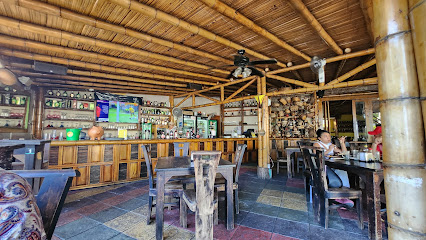
Trattoria Mr. Panino
Experience authentic Italian flavors at Trattoria Mr. Panino in San Andrés - where every dish tells a story.
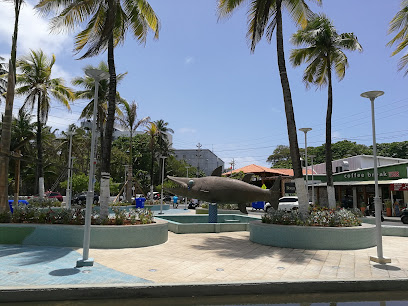
Mahi Mahi
Experience fresh seafood and vibrant flavors at Mahi Mahi – a must-visit dining destination in beautiful San Andrés.
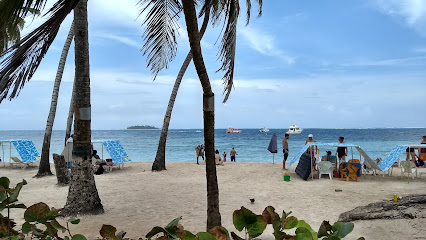
Beach Restaurant the Paradise
Experience fresh seafood and vibrant Caribbean flavors at Beach Restaurant the Paradise in San Andrés.
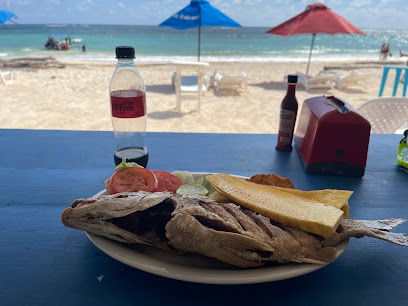
Markets, malls and hidden boutiques
San Andres Island center
Explore the vibrant shopping scene of San Andres Island, where local culture meets international brands in a tax-free shopping paradise.
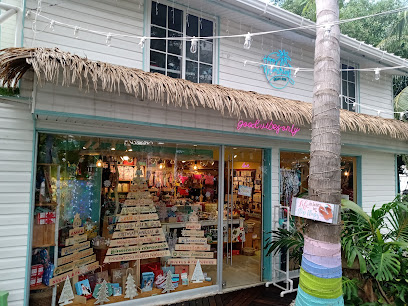
Store JR Importados
Explore the vibrant Store JR Importados in San Andrés for unique crafts, great deals, and a taste of local culture.
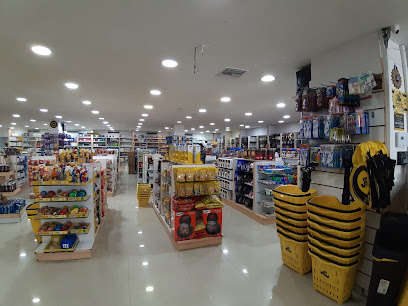
Esmeraldas Colombianas
Explore the beauty of handcrafted jewelry at Esmeraldas Colombianas, a must-visit destination in San Andrés for unique treasures.
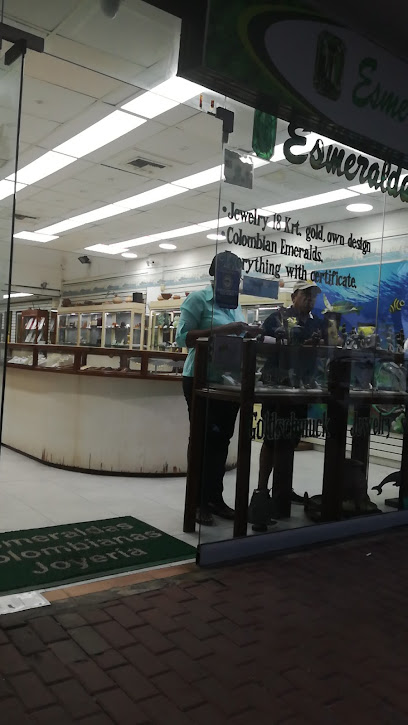
Miscelandia
Discover Miscelandia, San Andrés' vibrant department store offering everything from children's clothing to camping gear, perfect for all your shopping needs.
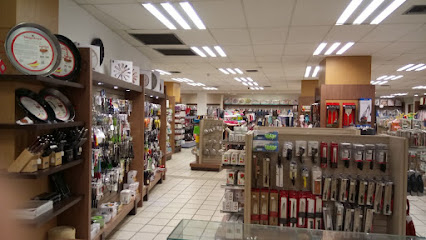
La Riviera Duty Free
Explore La Riviera Duty Free in San Andrés for unbeatable deals on luxury goods, local snacks, and a unique shopping experience in the Caribbean.
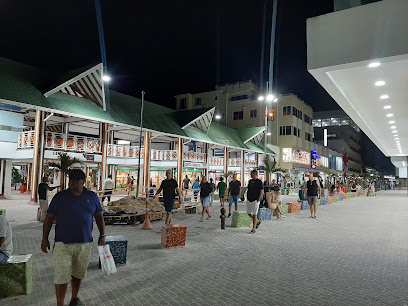
Sun n Sea - Tienda de vestidos de baño y accesorios de playa
Discover the vibrant beachwear collection at Sun n Sea, your go-to store for swimsuits and accessories in beautiful San Andrés.
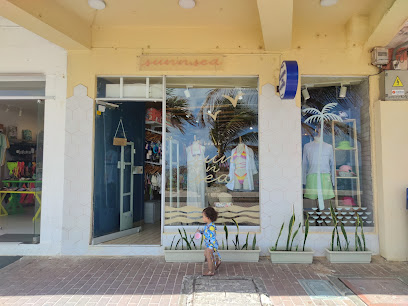
San Andres Islas
Discover the enchanting San Andres Islas: a Caribbean paradise filled with stunning beaches, vibrant culture, and endless adventure.
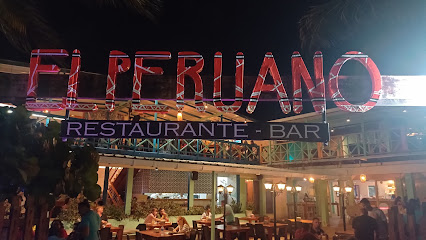
Quicksilver
Explore Quicksilver in San Andrés for stylish clothing that captures the vibrant essence of the Caribbean lifestyle while shopping.

DARNIA DETALLES Y MAS
Explore DARNIA DETALLES Y MAS for unique gifts and local crafts that embody the vibrant spirit of San Andrés.
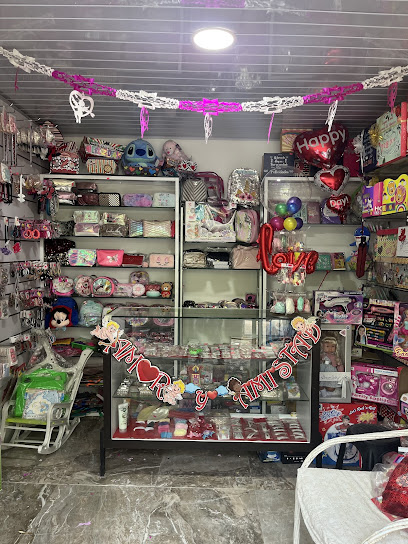
Tienda Owen's
Discover unique local treasures at Tienda Owen's in San Andrés, where vibrant culture meets delightful shopping experiences.

Happy Memories
Discover unique souvenirs and local crafts at Happy Memories, the must-visit gift shop in San Andrés, perfect for capturing your island adventure.
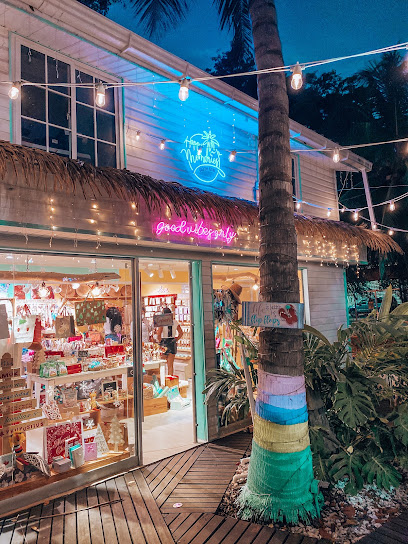
MUUV
Discover unique fashion at MUUV, the premier clothing store in San Andrés offering vibrant styles and local designs for every occasion.
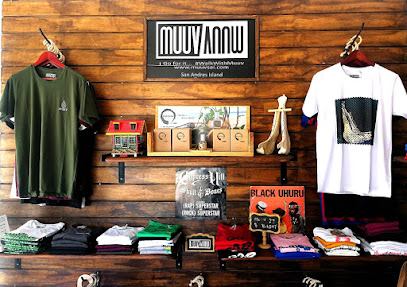
Palmare
Explore Palmare in San Andrés for unique Caribbean fashion that reflects the island's vibrant culture and style.
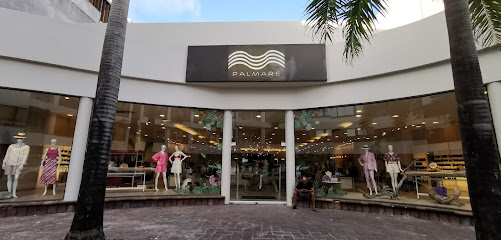
Lili Pink y Yoi
Explore Lili Pink y Yoi for a unique shopping experience in San Andrés, featuring stylish clothing, accessories, and home goods that embody island life.

Island Import
Explore vibrant tropical fashion at Island Import in San Luis, where local styles meet Caribbean charm for an unforgettable shopping experience.

Essential bars & hidden hideouts
La Regatta
Experience the best of Caribbean seafood with stunning views at La Regatta in San Andrés, where every meal is a delightful celebration of flavor.
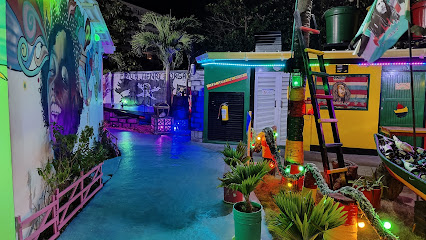
Beer Station - San Andrés
Discover the vibrant dining experience at Beer Station in San Andrés, where tempting grill flavors meet a lively atmosphere.
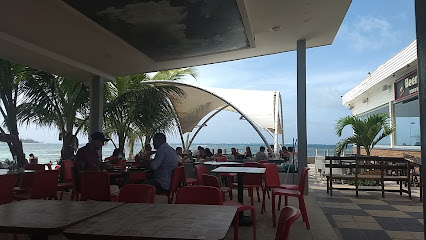
Banzai
Experience the vibrant nightlife at Banzai in San Andrés, where exceptional cocktails and tropical vibes create unforgettable moments.
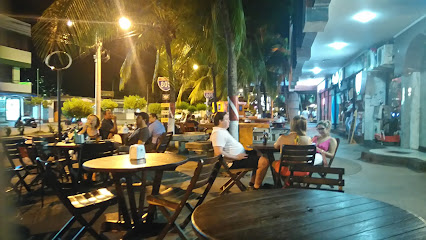
Black Zobombo Kella Reggae Bar
Discover the heart of San Andrés nightlife at Black Zobombo Kella Reggae Bar, where great music, vibrant energy, and delicious drinks await.
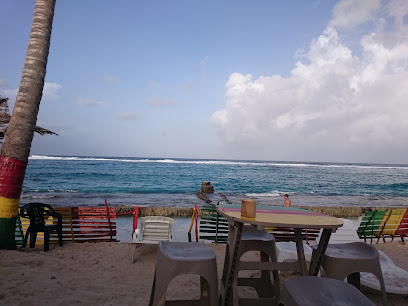
The Lighthouse Lounge Bar
Discover the vibrant atmosphere and exquisite cocktails at The Lighthouse Lounge Bar in San Andrés, a Caribbean paradise for every traveler.
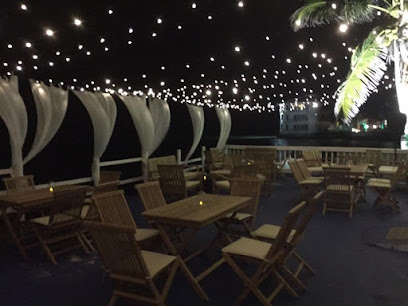
Bar Captain Monttie
Experience the vibrant atmosphere and tropical flavors at Bar Captain Monttie, the ultimate bar in San Andrés for relaxation and fun.
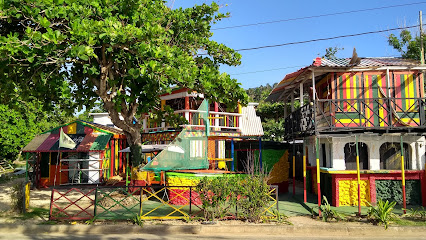
Big mama place
Experience the vibrant atmosphere and refreshing drinks at Big Mama Place, the ultimate bar destination on San Andres Island.

The Madguana Beach
Discover The Madguana Beach, where pristine sands meet exquisite gastropub cuisine on the breathtaking San Andrés Island.
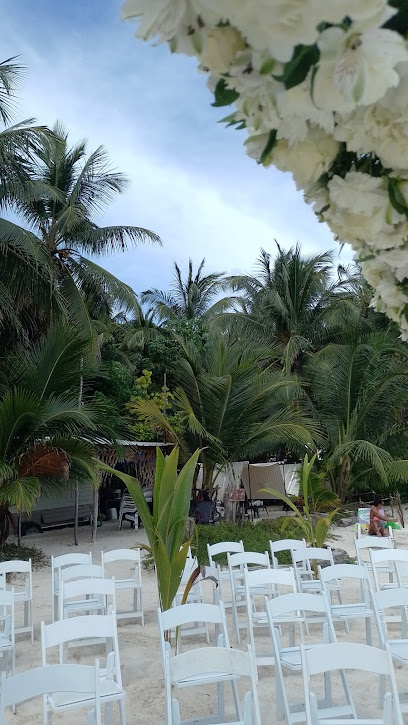
Ibiza (Bar Flotante San Andrés)
Discover the ultimate floating bar experience in San Andrés, where stunning views and vibrant cocktails come together in paradise.
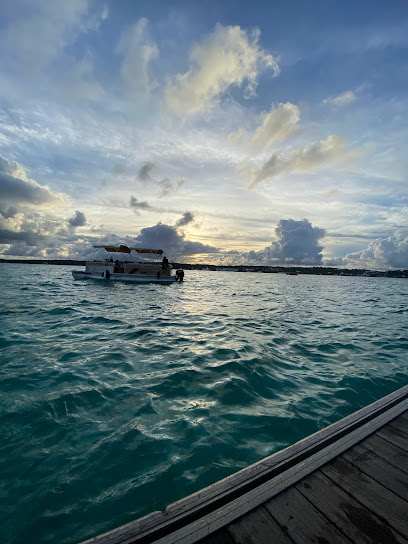
Blue Deep
Discover the vibrant nightlife at Blue Deep, a lively bar in San Andrés, offering exotic cocktails and a warm Caribbean atmosphere.
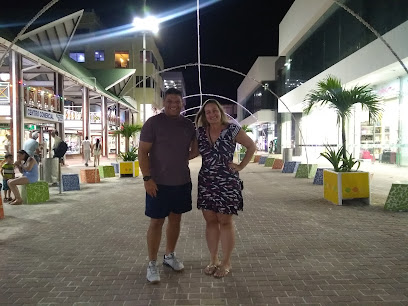
LOS ARRECIFES
Experience the vibrant nightlife of Los Arrecifes in San Andrés, where tropical cocktails and local culture create unforgettable memories.
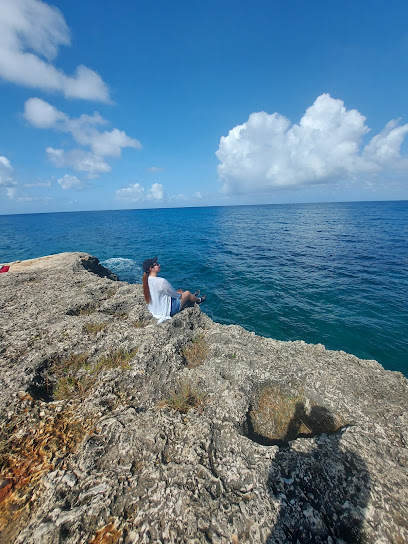
OCEAN BAR & RESTAURANTE.
Discover the vibrant atmosphere of Ocean Bar & Restaurante in San Andrés, where refreshing cocktails and local delicacies meet stunning ocean views.
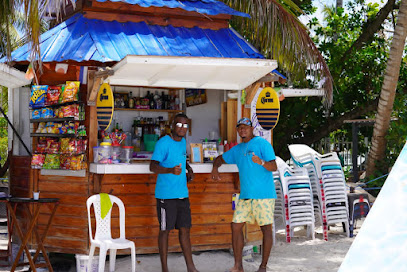
Typikal
Experience the vibrant nightlife of San Andrés at Typikal, where refreshing cocktails and lively music create unforgettable memories.
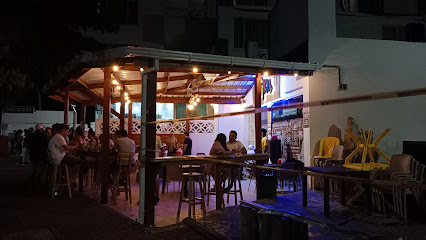
Island dream bar
Experience the vibrant nightlife of San Andrés at Island Dream Bar, where tropical cocktails and live music create unforgettable memories.

Deja Vu Beach Bar
Experience the vibrant flavors of Deja Vu Beach Bar in San Andrés, a perfect blend of delicious food, stunning views, and lively atmosphere.
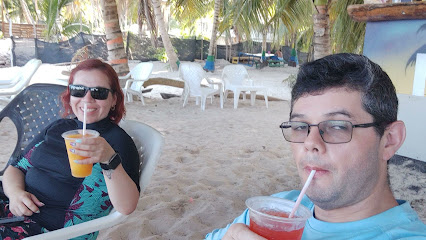
Local Phrases about San Andres Island
-
- HelloHola
[oh-la] - GoodbyeAdiós
[ah-dee-ohs] - YesSí
[see] - NoNo
[noh] - Please/You're welcomePor favor/De nada
[por fah-vor/de nah-dah] - Thank youGracias
[grah-syahs] - Excuse me/SorryDisculpe/Perdón
[dee-skool-peh/pehr-dohn] - How are you?¿Cómo estás?
[koh-moh ehs-tahs] - Fine. And you?Bien. ¿Y tú?
[byen. ee too] - Do you speak English?¿Hablas inglés?
[ah-blahs een-glehs] - I don't understandNo entiendo
[noh ehn-tyen-doh]
- HelloHola
-
- I'd like to see the menu, pleaseMe gustaría ver el menú, por favor
[meh goos-tah-ree-ah vehr ehl meh-noo, por fah-vor] - I don't eat meatNo como carne
[noh koh-moh kahr-neh] - Cheers!¡Salud!
[sah-loohd] - I would like to pay, pleaseQuisiera pagar, por favor
[kee-syeh-rah pah-gahr, por fah-vor]
- I'd like to see the menu, pleaseMe gustaría ver el menú, por favor
-
- Help!¡Ayuda!
[ah-yoo-dah] - Go away!¡Vete!
[veh-teh] - Call the Police!¡Llama a la policía!
[yah-mah ah lah poh-lee-see-ah] - Call a doctor!¡Llama a un doctor!
[yah-mah ah oon dohk-tohr] - I'm lostEstoy perdido/a
[ehs-toy pehr-dee-doh/ah] - I'm illEstoy enfermo/a
[ehs-toy ehn-fehr-moh/ah]
- Help!¡Ayuda!
-
- I'd like to buy...Me gustaría comprar...
[meh goos-tah-ree-ah kohm-prahr...] - I'm just lookingSólo estoy mirando
[soh-loh ehs-toy mee-rahn-doh] - How much is it?¿Cuánto cuesta?
[kwan-to kwehs-tah] - That's too expensiveEso es demasiado caro
[eh-soh ehs deh-mah-syah-doh kah-roh] - Can you lower the price?¿Puedes bajar el precio?
[pweh-dehs bah-hahr ehl pree-syoh]
- I'd like to buy...Me gustaría comprar...
-
- What time is it?¿Qué hora es?
[keh oh-rah ehs] - It's one o'clockEs la una
[ehs lah oo-nah] - Half past (10)La diez y media
[lah dyehs ee meh-dee-ah] - MorningMañana
[mah-nyah-nah] - AfternoonTarde
[tahr-deh] - EveningNoche
[noh-cheh] - YesterdayAyer
[ah-yehr] - TodayHoy
[oy] - TomorrowMañana
[mah-nyah-nah] - 1Uno
[oo-noh] - 2Dos
[dohs] - 3Tres
[trehs] - 4Cuatro
[kwah-troh] - 5Cinco
[seen-koh] - 6Seis
[says] - 7Siete
[syeh-teh] - 8Ocho
[oh-choh] - 9Nueve
[nweh-veh] - 10Diez
[dyehs]
- What time is it?¿Qué hora es?
-
- Where's a/the...?¿Dónde está...?
[dohn-deh ehs-tah] - What's the address?¿Cuál es la dirección?
[kwal ehs lah dee-rehk-syon] - Can you show me (on the map)?¿Puedes mostrarme (en el mapa)?
[pweh-dehs mohs-trar-meh (ehn ehl mah-pah)] - When's the next (bus)?¿Cuándo es el próximo (autobús)?
[kwan-doh ehs ehl proh-ksee-moh (ow-toh-boos)] - A ticket (to ....)Un boleto (a ...)
[oon boh-leh-toh (ah ...)]
- Where's a/the...?¿Dónde está...?
History of San Andres Island
-
San Andres Island was originally inhabited by indigenous people, likely from the Carib or Arawak tribes. These early inhabitants lived off the land and sea, engaging in fishing, farming, and trading with neighboring islands.
-
San Andres Island was first sighted by Europeans in the early 16th century. Spanish explorers charted the island, but it wasn't until later that it became a point of interest for European powers.
-
During the 17th century, San Andres became a notorious haven for pirates. Figures such as Captain Morgan and other buccaneers used the island as a base for launching raids on Spanish galleons and settlements.
-
In the mid-17th century, English Puritans and other settlers established a permanent presence on the island. They introduced sugarcane plantations and African slaves to work the fields, shaping the island’s early economy and society.
-
By the late 18th century, Spain had exerted control over San Andres, integrating it into the Viceroyalty of New Granada. The Spanish aimed to curb piracy and secure the island as a strategic military outpost.
-
Following the independence movements in Latin America, San Andres became part of the Republic of Gran Colombia in 1822. When Gran Colombia dissolved, the island continued to be under Colombian jurisdiction.
-
The Raizal community, descendants of African slaves and British settlers, have played a crucial role in the island's cultural identity. They maintain a unique Creole language and cultural practices that distinguish them from mainland Colombians.
-
In the 20th century, San Andres evolved into a popular tourist destination. Infrastructure developments, such as the construction of Gustavo Rojas Pinilla International Airport, have made the island more accessible to international visitors.
-
Efforts to preserve the island’s natural beauty and biodiversity have become a priority in recent years. Marine reserves and sustainable tourism practices are being promoted to protect the fragile ecosystems of San Andres.
San Andres Island Essentials
-
San Andres Island can be reached by air or sea. The primary gateway is Gustavo Rojas Pinilla International Airport (ADZ), which receives direct flights from major Colombian cities such as Bogotá, Medellín, and Cartagena, as well as some international destinations. Alternatively, you can reach the island by ferry from the coastal city of Cartagena, though this is a longer and less frequently used option.
-
Once on the island, transportation options include taxis, buses, and golf carts. Taxis are plentiful and can be hailed on the street or arranged through your hotel. Public buses run regularly between key points on the island and are an economical option. For more flexibility, consider renting a golf cart or scooter, which are popular choices for tourists and available from various rental shops.
-
The official currency on San Andres Island is the Colombian Peso (COP). Most hotels, restaurants, and larger shops accept credit and debit cards, but it's advisable to carry cash for smaller establishments and street vendors. ATMs are available in the main town of San Andres, but it's wise to withdraw sufficient cash to avoid multiple transactions fees.
-
San Andres Island is generally safe for tourists, but standard travel precautions should be observed. Avoid isolated areas, especially at night, and be cautious with your belongings in crowded places. Areas like the downtown or 'El Centro' are generally safe but remain vigilant. Instances of petty theft can occur, so use hotel safes for valuables and avoid displaying expensive items.
-
In case of an emergency, dial 123 for immediate assistance. The island has a hospital, 'Hospital Departamental Amor de Patria,' located in the main town, which can handle most medical situations. Pharmacies are widely available for minor health issues. Ensure you have comprehensive travel insurance that covers medical emergencies, including evacuation if necessary.
-
Fashion: Do dress in light, casual clothing suitable for a tropical climate. Swimwear is fine at the beach but not appropriate in town. Religion: Do respect local religious practices. If visiting a church, dress modestly and remove hats. Public Transport: Do be courteous and respectful. Avoid loud conversations and keep personal space. Greetings: Do greet people with a smile or a simple 'Hola.' A handshake is generally reserved for more formal encounters. Eating & Drinking: Do try local dishes such as 'Rondón' and coconut-based cuisines. Don't refuse an offer of food or drink, as it may be considered impolite.
-
To experience San Andres like a local, visit the traditional market 'Mercado Público' for fresh fruits, seafood, and local crafts. Engage with locals to learn about the island's unique Raizal culture, which blends Afro-Caribbean and Colombian traditions. Don't miss a visit to the 'Hoyo Soplador,' a natural blowhole that is a favorite among locals. For a more relaxed experience, head to the quieter beaches on the east side of the island, such as Rocky Cay, where you can enjoy the serene beauty away from the more crowded tourist spots.
Trending Landmarks in San Andres Island
-
Rocky Cay
-
Decameron Isleño
-
Beer Station - San Andrés
-
Hamburguesas El Corral
-
Bocca De Oro
-
San Andrés Ecological Park
-
Centro De Buceo Blue Life
-
Azure Lofts & Pool
-
Acantilado de la Tierra
-
Vuelta a la Isla de San Andrés - Tren Turístico
-
First Baptist Church in Latin America
-
San Andrés
-
Arnols places
-
Isla San Andres
-
Barco Encallado
Nearby Cities to San Andres Island
-
Things To Do in Bocas del Toro
-
Things To Do in San Jose
-
Things To Do in La Fortuna
-
Things To Do in Portobelo
-
Things To Do in Colon
-
Things To Do in Monteverde
-
Things To Do in Boquete
-
Things To Do in Volcan
-
Things To Do in Ometepe
-
Things To Do in Manuel Antonio
-
Things To Do in San Blas Islands
-
Things To Do in Jaco
-
Things To Do in Liberia
-
Things To Do in Panama City
-
Things To Do in Rivas










